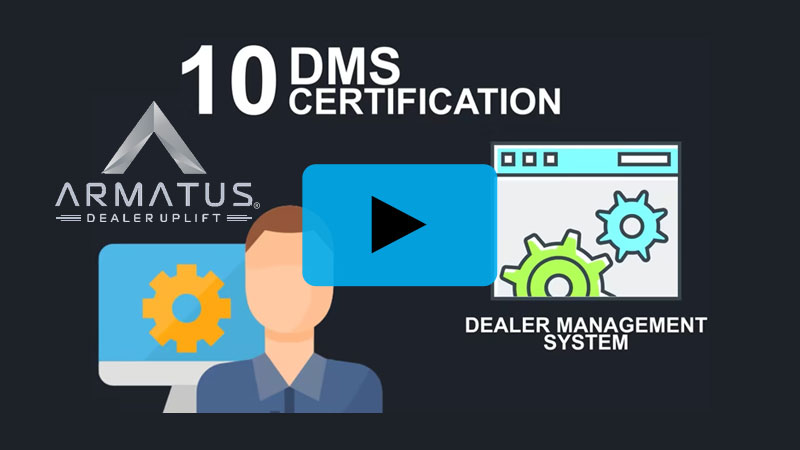
On January 19, I attended the FTC Workshop on issues and trends within the automotive industry. I will set aside all political views in my analysis of what was discussed and simply relay the facts that matter to our clients and other advisors and professionals in our industry. Additionally, my primary focus will be on Part 2 of the workshop discussion on retail warranty reimbursement regulation.
Opening Remarks
To begin with, the opening remarks of the chairwoman of the Federal Trade Commission, Edith Ramirez, set the tone for the sessions to follow by discussing the FTC’s involvement in the earliest days of the domestic auto industry. She discussed a major report of more than 1,000 pages produced for Congress in 1939 and went on to say in reference to the report
“It also highlights the origins of our current system of auto distribution, which has remained remarkably unchanged (emphasis added) in the subsequent 80 years despite dramatic changes that swept across other retail sectors.”
She goes on to make comments such as “we’re still asking whether consumers benefit from that system, or if change is needed,” and regarding direct sales, “these are forcing us to reexamine the way that cars are sold.” Additionally, and most pertinent to retail warranty reimbursement, she states, “we’re focused on how state-based laws and regulations affect consumers, competition and innovation.” The general tone was one of challenging the current system of distribution in light of how much other industries have changed during the last century, as if there should be some kind of one to one correlation with unrelated industries, as well as a questioning of state laws conceived, analyzed, debated and crafted at the local level.
The Panel
The panel for retail warranty reimbursement regulation was comprised of four participants: Jim Appleton, President of NJCAR; well-known dealer attorney Richard Sox; Daniel Goldberg, an industry lawyer representing manufacturers’ interests; and Professor David Sappington who provided support to manufacturers in recent actions challenging the constitutionality of some retail warranty reimbursement laws.
Having worked in the retail automotive industry directly for over 22 years, and consulting exclusively with car dealers for the past 5 years, I have to say I was quite amazed by the positions taken by the two speakers representing manufacturers’ interests. Mr. Goldberg launched into a global attack on the subject of retail warranty reimbursement, making comments regarding legislatures adopting “minimum pricing that certain buyers have to pay for products and services,” indicating that dealers “are not victims according to NADA statistics,” further indicating that
“on average across the country, they [dealers] make over $1 million net profit in a year.”
This is a telling comment; in that it speaks to the belief that many dealers have, which is that the manufacturers perceive that dealers make disproportionate profits for their efforts.
Manufacturers’ Lawyer’s Comments
Mr. Goldberg completely dismisses the argument that there is historic unequal bargaining power between the manufacturer and the dealer. The justification for this contention is that the average revenue of a dealership is now $50 million, and that they are PROFITABLE. He further attempts to justify this position by focusing on public dealer groups, and how their size has leveled the playing field, and that the smaller dealers “get a free ride on the negotiating power of these enormous dealer groups.” Interesting that these “Fortune 500” players who comprise about 5% of the franchises in the U.S. somehow possess such enormous leverage with the manufacturers that they influence the entire “David and Goliath” dynamic.
The representation that retail warranty reimbursement was “as a result of the negotiations between manufacturers and dealers is that manufacturers pay a 40% mark-up,” could only be the perspective of someone that has never walked in the dealers’ shoes. You either comply with the mandated rate, or you don’t get a dealer agreement. To say that “these warranties are great for dealers…that they provide a captive audience…get non-warranty work that flows from it, with no need to advertise,” can only be characterized as ignorance of what occurs in the real world of retail automotive. To have the audacity to flat out state that
“warranty is a profit center, and always has been a profit center,”
then to proffer that the retail reimbursement laws arose out of cars improving in quality, dealers’ profits dipping, and them looking for ways to bring warranty work up to historical levels, is downright insulting. Apparently Mr. Goldberg is unaware that warranty service work is the least profitable work in the shop, that it produces serious morale problems, and that dealers are saddled with extraordinary facility, training and special tool requirements. He goes on to quote a study by “two brilliant people” indicating that “states enact laws that extract rent from manufacturers, and redistribute it to dealers.” Really Mr. Goldberg, is this your opinion as well, or even worse, the general belief of the manufacturers you represent?
Mr. Goldberg goes on to address manufacturers’ surcharges, or recoupment for “additional” warranty service expense incurred by the manufacturers. He positions this as the customer being punished by the unfair state laws benefiting the dealers, rather than the reality of the manufacturers deliberately failing to build the proper warranty exposure into the price of their vehicles, and attempting, instead, to shift its true expense to the dealer and other non-warranty customers. The dealer simply can’t make a profit off of a 40% warranty reimbursement, and the state statutes justifiably require the manufacturer to pay a market rate of reimbursement. To say that
“the enormous costs have to get reflected somewhere else in the system, all of which results in things that are adverse to consumers,”
is to deflect from the truth of the matter, which is that the ultimate goal of the manufacturer is to minimize its warranty costs, at the expense of the dealer and the consumer.
To further demonstrate Mr. Goldberg’s low regard for franchise laws that protect dealers, all he could muster in response to a moderator question regarding the uniqueness of the auto industry was a comment regarding dealers superior political power at the state level and the weak analogy,
“if the elevator operators had had the same political power that dealers did, we wouldn’t have self-operating elevators.”
Professor Sappington’s Comments
The second manufacturer panelist sympathetic to the manufacturers’ point of view, Professor Sappington, spoke in generalized terms, essentially espousing free market principles, specifically competition, and not regulation, as the cure for all ills. Generally, I would agree with the professor, but when the imbalance between the parties is so severe, and the more powerful party systemically utilizes such power to thwart the other, I would say that the playing field needs to be leveled. This dynamic is the fundamental underpinning of the retail warranty reimbursement laws, and why they are necessary. The professor believes that competition between the major manufacturers compensates for the imbalance between the specific manufacturer and the individual dealer. In fact, he puts forth the same postulate that Mr. Goldberg espouses, which is that the dealers are now “major players, major economic entities.” There’s a bit of naivety in comments like “competition seems very likely to motivate manufacturers and dealers to work together to agree upon warranty reimbursement terms” and “it is not apparent that we really need government intervention here to force these manufacturer and dealer teams to agree upon warranty terms.” It’s obvious that the professor has not experienced a manufacturer visit to a dealership.
Some of the other comments by Professor Sappington are simply untrue. For example, regarding the retail warranty calculations, he states:
“the way this is being implemented leaves room for the dealer to essentially not count discounts on sales that they make to their retail customers when calculating how much they’re receiving on average for their retail work, and so, in fact, what they’re actually receiving is above what their calculated rates are.”
This statement demonstrates a complete lack of understanding of the retail warranty reimbursement submission process. The truth of the matter is that all manufacturers require the dealer to apply discounts, and some actually force dealers to apply discounts to qualifying repairs, even when the discount has no relevance whatsoever to that specific operation. The statement that “the manufacturers are paying more for warranty work than dealers are getting from their non-warranty work” is a loose generalized statement that completely ignores the formulas embedded in state laws, which in many cases mirror the manufacturers own formula for calculating fair mark-up and labor rate increases.
I really have no problem with the professor’s generalized academic statements regarding market dynamics, but to draw such specific conclusions, and to calculate “additional” costs predicated upon them, simply neuters his findings. It’s fine that he concurs with Mr. Goldberg’s parallel contentions regarding “increased” costs versus what dealers would characterize as fair warranty reimbursement, but the fact that this is yet another cost-shifting strategy by the manufacturers would have been a more honest conclusion. Sadly, the professor rolled out the tired manufacturer allegation that retail warranty reimbursement laws are bad because they incentivize the dealers to charge more to the customer simply so they can charge more to the manufacturer. Somehow he lost sight of the market dynamics he had been espousing throughout his dissertation. Dealers must price customer pay work at market rates; otherwise, the market will go elsewhere.
Jim Appleton’s Comments
From the dealers’ perspective, Jim Appleton laid out a clear case for the need of laws to protect dealers against manufacturer strong-arming. He noted items such as the dealers’ substantial investments in facilities, technician training, proper equipment, special tools and the like. He was brutally honest about the manufacturer/dealer relationship and didn’t pull any punches when it came to describing it. Jim reviewed some of the history and background regarding court cases as far back as 1991, and how the retail warranty reimbursement laws came about in the first place. He cited specifics regarding manufacturers’ reimbursement practices, as well as the inequities regarding GM’s surcharge in New Jersey. Jim addressed the transparency in the retail side of the business, while noting that “the wholesale side of the business is cloaked in secrecy.” In closing, Jim stated
“that the automakers efforts to unravel state franchise laws, and avoid fair payments to dealers, won’t benefit consumers, just enrich manufacturers.”
Richard Sox’s Comments
Dealer attorney Richard Sox effectively countered the positions taken by Mr. Goldberg. He addressed the need for market-driven rates for dealers to be profitable, while highlighting the manufacturers’ practice of suppressing warranty reimbursement rates as the germination of the state laws mandating retail. Sox articulated the ever-increasing financial demands the manufacturers have inflicted on dealers, while at the same time not properly compensating them for warranty service repairs. He raised many of the same points that Jim Appleton did regarding facilities, training, equipment, special tools, loaner cars, etc. Probably the most compelling point that was made was that decisions by no less than eight federal courts have addressed these issues under laws in six different states. According to Sox,
“courts have looked at the evidence – sworn testimony, documents, and have repeatedly found…that those costs were beginning to be covered by the customer-pay, non-warranty folks coming in and having work done on their cars, and so this [the law change] was an effort to balance that, by making the manufacturers pay their fair share of the warranty work under their warranty to relieve the pressure on the customer-pay side; that’s in several court cases.”
General Panel Discussion
Another question that should be of some concern to dealers was whether someone other than non-franchised dealers should be allowed to perform warranty service work. Mr. Goldberg feels that “we ought to let the marketplace determine who can adequately perform warranty.” He goes on to say “so long as an independent repair shop can establish to us satisfactorily that they can do a good job on warranty, we will appoint them.” With such a demonstrative statement, I would surmise that this is exactly what the manufacturers he represents think. He goes on to say that based on new models of ownership that it’s possible that “the manufacturers do the warranty work themselves; who knows?
“Why should this part of the industry be mired in the 20th century, when all other aspects of this industry are proceeding on to parts unknown, which are not wedded to this historical model?”
As if auto dealers didn’t have enough to worry about, with the massive financial investments they make and the incessant performance measurements they are subjected to, but now, those without those same requirements, or even the very manufacturers which dealers represent, might be allowed to perform warranty service work.
Towards the end of the panel discussion, the big question got asked: “there are some dealers who do not take advantage of the higher rates guaranteed to them by statute; why might that be?” Jim Appleton discussed the overt threats by manufacturers, including the ones recently put in writing by GM, which threatened to throw dealers off their CPI auto-increase program, unilaterally calculate the labor rate from retail warranty parts submissions, and indicate that the dealer would be subjected to audits. Jim was very blunt in his description:
“It’s strong-arming; it’s using your superior economic strength over a weaker business partner to exact your will.”
Mr. Goldberg rolled out the same vacuous argument he used earlier about the power of big dealer groups, despite the clear statistics quantifying their minimal percentage of the market. The most shocking comment though was,
“I submit to you that there is another reason why a lot of auto dealers have not put in for the retail rate; and that is because they were already paid what they regarded as a fair return.”
I can tell you firsthand, that after talking with well over thousand dealers on this subject, the number one reason for not submitting, or submitting and subsequently rescinding, are factory threats and the fear of the factory reprisals – period! He goes on to state “some [manufacturers] offered to reimburse warranty parts at MSRP for those parts, more like a 67% return.”
Our firm has performed multiple studies on retail warranty reimbursement, and when lower markups on major assemblies, no-cost exchanges, recall parts and the like are factored in, the true retail warranty reimbursement rate is in the low to mid-50% range. One has to wonder whether these loose anecdotal comments simply indicate a lack of understanding of the reality or a deliberate attempt to mislead the uninformed and obscure the facts.
Closing Comments
I have to say that sitting through a panel discussion such as this, which covers your own personal core expertise, is quite difficult. There’s no doubt that depending on what side you are on, you necessarily have vastly differing perspectives as to what is being said. It is obvious that there are deep-seeded feelings on both sides, and that the “partnership” so frequently referred to is one wrought with something less than a “healthy” tension. Dealers are burdened by an incredible amount of federal and state regulations, and expend extraordinary amounts of time simply dealing with compliance. The FTC has created the specter of yet another area of concern for dealers beyond the enormously difficult job of running their businesses day to day.









